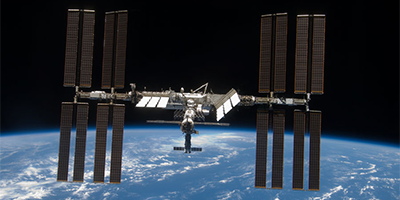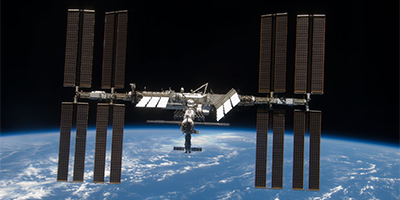Staying Cool in Outer Space
A heat pipe transfers heat between two surfaces by evaporating liquid at one end and condensing it at the other. The pipes don’t involve any prone-to-failure mechanical parts, nor require any power, so they are important cooling components in spacecraft for long-distance missions. But experiments on the International Space Station now indicate that the cooling devices behave in a surprising way in the absence of gravity. The results reveal that the device’s performance, such as how fast it can transfer heat, is limited by different mechanisms in space than on Earth.
Joel Plawsky at the Rensselaer Polytechnic Institute, New York, and his colleagues investigated the conditions that set a heat pipe’s safety and operational limits. They imaged the interior of a few-centimeter-long transparent pipe containing pentane while they heated one end to almost (the self-ignition temperature of the liquid when exposed to air). On Earth, cooling performance drops at temperatures that cause the liquid to evaporate too quickly and the pipe’s hot end to dry out. In space, however, the researchers found that at similar temperatures, the opposite occurs: the pipe’s hot end, instead of drying out, is flooded by liquid. This occurs because of the competing contribution of so-called Marangoni forces, which push fluid between regions with different surface tension: the cold and the hot ends of the device. The Marangoni effect is usually swamped by gravity on Earth but becomes dominant in space. The finding calls for new theoretical tools to describe how interfacial forces affect the behavior of heat pipes, particularly for space applications in which temperature differences can be very large, such as the cooling of propulsion components.
This research is published in Physical Review Letters.
–Matteo Rini





